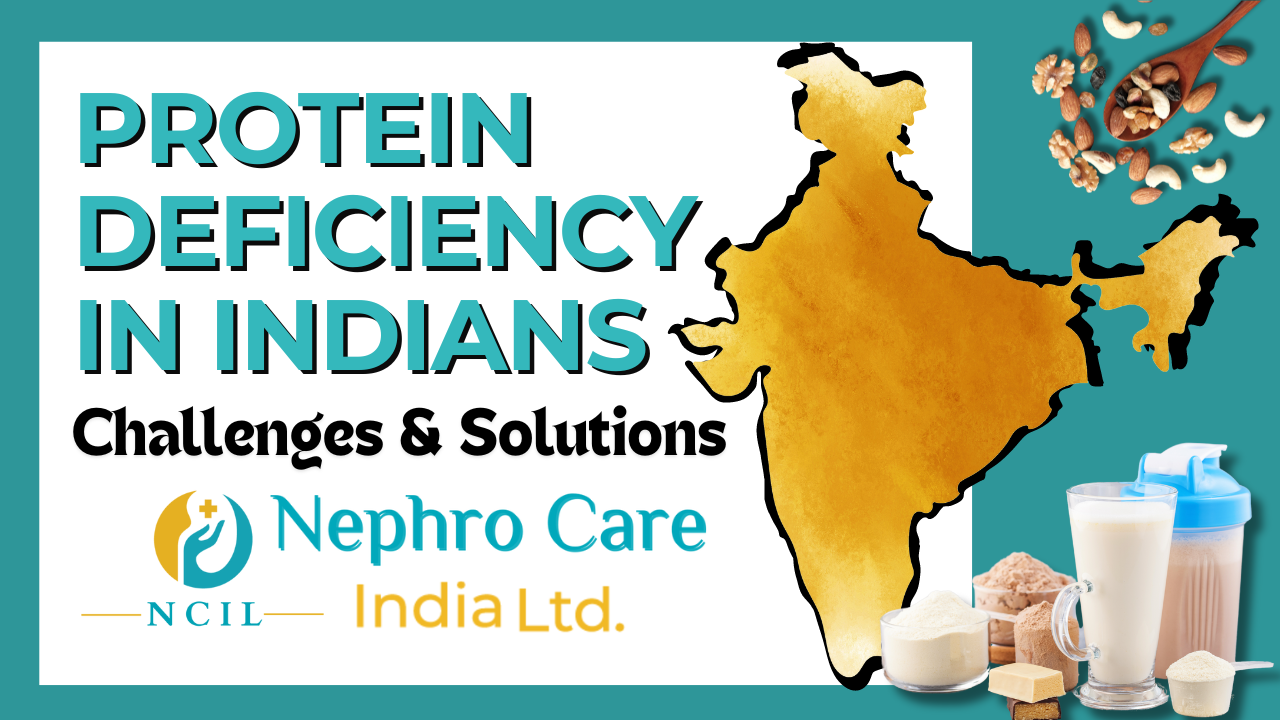Protein Deficiency in Indians: Challenges and Solutions
Protein is a crucial macronutrient for the growth, repair, and maintenance of body tissues. It comprises amino acids, the building blocks necessary for constructing muscle, skin, enzymes, and hormones.
The vital role of protein in our health:
- Growth and Development
- Repair and Maintenance
- Nutrient Transport and Storage
- Enzymes and Hormones
- Immune Function
- Energy Source
The Recommended Dietary Allowance (RDA) for protein is a modest 0.8 grams of protein per kilogram of body weight or 0.36 grams per pound.
Protein deficiency is a significant component of malnutrition, affecting millions across India. Despite economic advancements and a relatively robust healthcare system, inadequate protein intake remains a pressing issue, particularly among rural populations and economically disadvantaged groups. This deficiency contributes to various health problems, including compromised immune systems and stunted growth. According to the National Family Health Survey (NFHS-5) and the National Institute of Nutrition (NIN), approximately 73% of Indians do not meet the recommended dietary allowance (RDA) for protein. This blog explores the underlying causes of protein deficiency in India, its impact on health, and potential strategies to address this issue.
Causes of Protein Deficiency:
- Cultural and Dietary Habits: Traditional Indian diets in many regions are heavily carbohydrate-centric. For instance, diets in several parts of India consist mainly of rice or wheat with minimal inclusion of protein-rich foods.
- Economic Barriers: Many families, particularly those below the poverty line, cannot afford protein-rich foods such as meat, fish, dairy products, and pulses. The high cost of these foods compared to staple grains like rice and wheat makes it challenging for economically disadvantaged groups to meet their protein needs.
- Lack of Nutritional Awareness: There is a widespread lack of knowledge about the importance of protein in the diet. Many people are unaware of affordable protein sources like legumes, beans, and certain leafy greens.
- Agricultural Practices: The focus on staple crops such as rice and wheat, driven by food security policies, often overshadows the cultivation of protein-rich crops. This agricultural bias further limits the availability of diverse protein sources.
Health Impacts of Protein Deficiency:
Malnutrition leads to significant health complications, particularly for children and pregnant women, with protein deficiency being a major concern. Here are some of the common consequences:
- Stunted Growth: Inadequate protein intake can restrict both physical and cognitive development in children, resulting in stunted growth and developmental delays.
- Weakened Immune System: Proteins play a vital role in maintaining a strong immune system. Insufficient protein can compromise the immune response, making individuals more susceptible to infections and illnesses.
- Muscle Wasting: A lack of protein prevents the body from maintaining muscle mass and strength, impacting physical function and mobility.
- Edema: Severe protein deficiency can cause edema, characterized by fluid retention that typically starts in the feet and ankles due to inadequate protein levels.
Strategies to Combat Protein Deficiency:
- Diet Diversification: Enhancing the variety of protein sources in daily meals can significantly boost protein intake. Foods such as pulses, legumes, dairy products, eggs, fish, and lean meats should be included regularly to ensure adequate protein consumption.
For more information about protein-rich foods, please reach out to our diet team.
- Biofortification: Promoting crops that are enriched with essential nutrients, including protein, is a viable approach to combating deficiencies. For instance, biofortified varieties of wheat and rice are being developed and introduced to improve nutritional quality (MDPI).
- Government Policies and Programs: Expanding and strengthening programs that address nutritional needs, such as broadening the Public Distribution System (PDS) to include protein-rich foods, can improve accessibility for low-income households. Additionally, enhancing existing programs like the Integrated Child Development Services (ICDS) and the Mid-Day Meal Scheme to incorporate protein-based diets for children and pregnant women can be beneficial.
- Agricultural Reforms: Encouraging the cultivation of protein-rich crops can help provide affordable protein sources. Policy support and incentives for farmers to grow pulses, soybeans, and other high-protein crops can make a significant difference in addressing protein deficiency.
Conclusion:
To effectively combat protein deficiency in India, a holistic approach involving dietary changes, biofortification, public awareness, supportive policies, and agricultural reforms is essential. By adopting these strategies, India can make significant progress in improving the nutritional and overall health status of its population. This multifaceted approach not only addresses immediate dietary needs but also fosters long-term sustainability and resilience in the country’s food and health systems. Ensuring adequate protein intake across all demographics will lead to a healthier, more productive population, ultimately contributing to the nation’s socioeconomic development.


